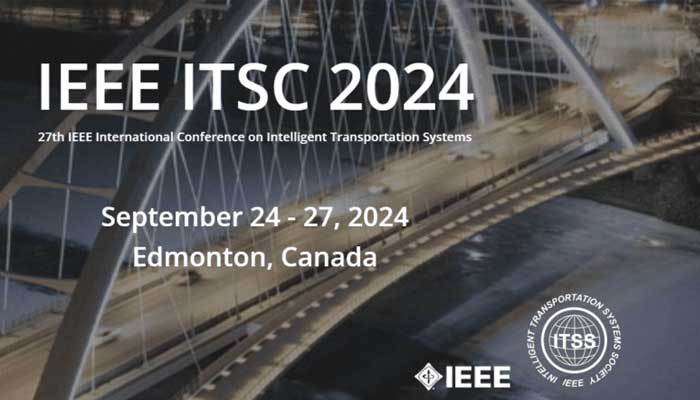Bhaiya Vaibhaw Kumar working with Dr. Kavita Vemuri presented a paper on myEye2Wheeler: A Two-Wheeler Indian Driver Real-World Eye-Tracking Dataset at 27th IEEE International Conference on Intelligent Transportation Systems (IEEE ITSC 2024) held from 24 to 27 September in Edmonton, Canada. Here is the summary of their research work as explained by the authors Tanvi Kandalla, Aarnav Nagariya and Deepti Rawat:
This paper introduces the myEye2Wheeler dataset, a unique resource capturing the real-world gaze behaviour of two-wheeler drivers navigating the complex and diverse Indian traffic. Unlike most existing datasets, which primarily focus on four-wheeler drivers in well-planned roads and homogeneous traffic environments, our dataset offers crucial insights into the visual attention patterns and decision-making processes of Indian two-wheeler drivers.
By presenting this dataset, we aim to fill a significant gap in the research on two-wheeler driver behaviour in India. Furthermore, we underscore the importance of developing context-specific saliency models that address the unique challenges faced by two-wheeler drivers. Ultimately, our work aims to improve road safety for two-wheeler users, inform lane-planning to support cost-effective transportation, and contribute to the development of autonomous vehicles tailored for Indian traffic conditions.
This paper presents the myEye2Wheeler dataset, a unique resource of real-world gaze behaviour of two-wheeler drivers navigating complex Indian traffic. Most datasets are from four-wheeler drivers on well-planned roads and homogeneous traffic. Our dataset offers a critical lens into the unique visual attention patterns and insights into the decision-making of Indian two-wheeler drivers. The analysis demonstrates that existing saliency models, like TASED-Net, perform less effectively on the myEye-2Wheeler dataset compared to when applied on the European 4-wheeler eye tracking datasets (DR(Eye)VE), highlighting the need for models specifically tailored to the traffic conditions. By introducing the dataset, we not only fill a significant gap in two-wheeler driver behaviour research in India but also emphasise the critical need for developing context-specific saliency models. The larger aim is to improve road safety for two-wheeler users and lane-planning to support a cost-effective mode of transport.
Conference page – https://ieee-itsc.org/2024/ and https://ieee-itsc.org
September 2024

